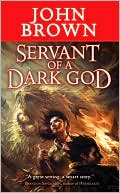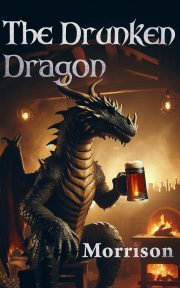Key Conditions for Suspense:
Part 25 – Patterns for Struggle Elements 5 & 6
by John D. Brown
 The following is part of a continuing series. If you wish to start at the beginning, head to It’s All About The Reader.
The following is part of a continuing series. If you wish to start at the beginning, head to It’s All About The Reader.
In my last three posts, I’ve discussed a number of options for elements of the struggle phase. In this post, I’ll finish those.
What leads the hero into the final showdown
The next thing you want to think about is what locks the hero into the final showdown and moves the story from struggle to resolution. I see three things that can do this:
- An insight & decision
- Some piece of information or a tool
- An external pressure
Which it will be often depends on the main obstacle the character faces.
The stories that use insight and decision are usually those where the main obstacle is the character’s internal problem. For example, in stories where love and friendship is on the line and the obstacle is the main character’s values, it may be that the hero has to make a decision to place love above something else.
So the hero, as in Sabrina with Harrison Ford, finally comes to the insight that no amount of business success can compensate for a lack of love. Of course, his actions before this point have made a mess of the relationship. He’s betrayed and humiliated her. Struck her to the core. Will she have him back? We don’t know. But he decides to make one last attempt to win her love and heads to the resolution.
In another type of story, the chief obstacle may be a lack of information. So maybe the hero has the power to deal with the problem, but doesn’t know who the villain really is. A lot of murder mysteries are structured this way. At the point when the hero finally learns the identity of the villain, he immediately heads to the climax to expose or capture the criminal. Sometimes the missing information is now who did it, but where they are. Now that the hero knows the location of the villain, he can go in to take him out. In another story of this type, the main obstacle might be finding a cure for a virus. Once the hero finally figures out the key, that last bit of info, she can head to the resolution.
Sometimes it’s not information the hero lacks, but some object–a weapon or tool. Until he gets it, he can’t possibly beat the opposition. For example, in John Grisham’s The Firm the hero needs to get documentation he can use as blackmail to make the partners of the firm back off. Once he has this, he can go face them and resolve the problem for good.
Finally, in some stories the thing that thrusts the hero into the final confrontation is some external force. For example, in Hunger Games the hero is holed up and surviving just fine. But because the gamers want the last battle, they force all the remaining contestants together. Likewise, in Star Wars, the empire finds out the location of the rebel base. Our heroes probably would have stayed hidden or on the run if they could have, but the empire forces them to act.
Please note: some folks maintain that all awesome stories feature the hero facing a certain type of ultimate obstacle, which affects what locks the hero into the final showdown. For example, some say the only way to write an awesome story is for the hero’s internal flaw to be the real obstacle to his solving of the external problem. And so the lock is him overcoming the inner obstacle so he can solve the external problem. Spiderman 2 is an excellent example of this type of story. And this type of problem can be very delicious.
But there are so many other awesome stories where a character’s flaw isn’t the main obstacle or even an obstacle at all. The Good Guy, Ride the River, episodes of The Mentalist and hundreds of other stories fall into this category. Don’t feel forced to use one type of obstacle. Use whatever makes the story most interesting to you.
Once your character is locked into the final showdown, the struggle phase ends.
Proportion
We already know the 25-50-25 proportion is bogus for the presentation phase. So how big are the struggle phases of the books you love? They might be different from the ones I love. Still, I think it’s useful to see the variety that’s out there. Here are a few from books that work for me:
- Hunger Games: 79%
- The Good Guy: 74%
- Servant of a Dark God: 68%
- Monster Hunter International: 66%
- A random episode of The Mentalist: 51%
Clearly, there is a wide range of proportions that work. Your job is to look at the stories that you love, the ones that have a struggle phase that works for you (and the ones that don’t work at all), and see how long it takes to build reader tension to the levels you want before you head into the resolution. Don’t follow it slavishly. Use it simply to give you a general idea of proportion.
And this wraps up my discussion of options for the struggle phase. In the next two posts, I’ll discussion options for the resolution phase and wrap this series up.
Happiness,
John
•••
 John Brown is an award-winning novelist and short story writer. Servant of a Dark God, the first book in his epic fantasy series, was published by Tor Books and is now out in paperback. Forthcoming novels in the series include Curse of a Dark God and Dark God’s Glory. He currently lives with his wife and four daughters in the hinterlands of Utah where one encounters much fresh air, many good-hearted ranchers, and an occasional wolf.
John Brown is an award-winning novelist and short story writer. Servant of a Dark God, the first book in his epic fantasy series, was published by Tor Books and is now out in paperback. Forthcoming novels in the series include Curse of a Dark God and Dark God’s Glory. He currently lives with his wife and four daughters in the hinterlands of Utah where one encounters much fresh air, many good-hearted ranchers, and an occasional wolf.
For a list of all of the posts in this series thus far, click on the “John D. Brown” tag.


